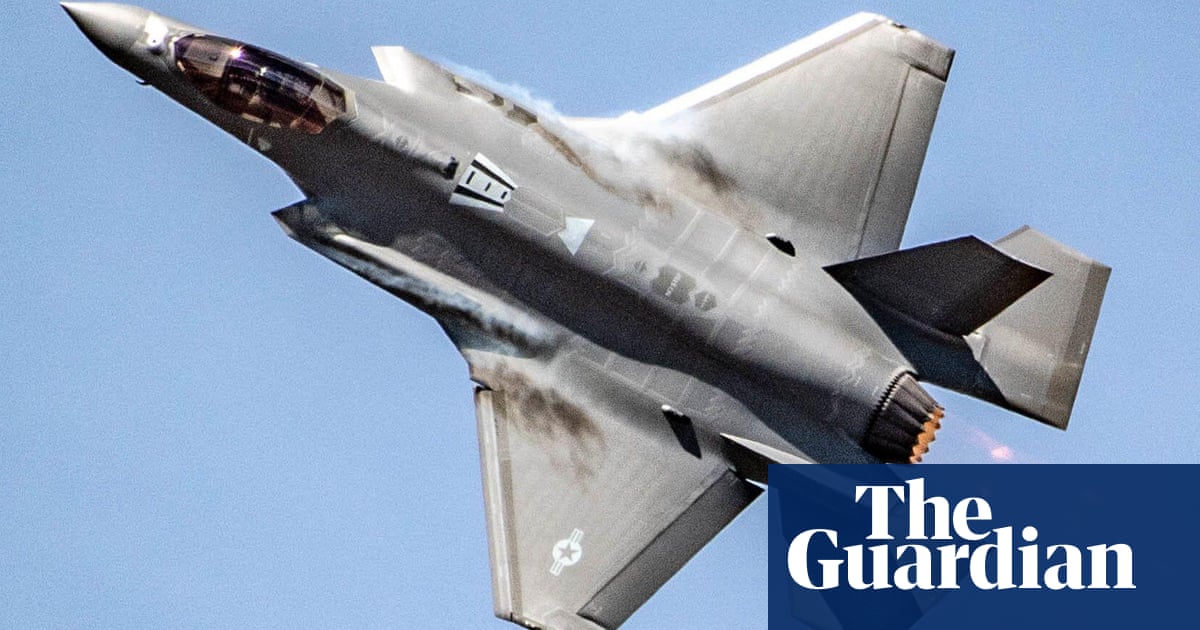Britain is to obtain air-launched nuclear weapons by buying a squadron of 12 F-35A fighter jets, which are capable of carrying the US B61-12 gravity bomb as well as conventional arms, Keir Starmer has announced at the Nato summit.
The jets, made by the US defence giant Lockheed Martin, will be based at RAF Marham in Norfolk, where it is likely that the nuclear bombs will also be stored. Because of existing nuclear non-proliferation agreements, the nuclear weapons will be owned by the US, while the jets will be under the control of the RAF – and therefore British. Once operational, at the end of the decade, it would be the first time that the UK will have an air-launched nuclear weapon since 1998, when the WE177 was cancelled under Tony Blair’s Labour government.
No. The approach is known as “nuclear sharing” and mirrors longstanding arrangements dating back to the cold war that exist in Germany, Italy, Belgium, the Netherlands and Turkey – which exist under Nato structures.
The result is that the gravity bombs – freefall explosives with limited guidance systems – remain under the operational control of the US president, while the planes are flown by pilots from the host country. In a war, Nato hassaidthe use of such bombs in Europe would already require “explicit political approval” from Nato’s nuclear planning group and “authorisation is received from the US president and UK prime minister”, though in a major crisis it is unclear whether a committee would have time to meet.
Yes. The last US nuclear weapons left RAF Lakenheath in Suffolk in 2008, and their presence in the UK was a major focus for protest in the past, most notably at RAF Greenham Common. The Ministry of Defence never discloses the location of stored nuclear bombs, though RAF Marham in Norfolk – where there are old storage facilities that were used for the WE177 – is the obvious location.
During the cold war, air-launched bombs were also stored in RAF Lossiemouth, north-east Scotland, but this has not been mentioned this time. Another possibility is that the bombs could be stored at RAF Lakenheath, which is essentially a US air force base, and where the storage vaults are in the process of being upgraded as part of a US programme.
Trident is designed to be a deterrent weapon of last resort. The UK maintains a single submarine at sea at all times, which carries about 40 warheads, each with the destructive power of about six times the 15-kiloton (kt) Hiroshima bomb. The weapons are only to be used in the highly unlikely scenario where a surprise, all-out nuclear attack destroys the UK and its way of life. In theory, the weapons on a Trident submarine have the destructive power to destroy major cities such as Moscow or Beijing, and so act as a deterrent.
However, there is a growing belief among military planers that there is a need for lesser, tactical or sub-strategic nuclear weapons that could notionally be used on a battlefield. The B61-12, a relatively simple gravity bomb that must be flown and dropped over its target, comes in four variants, only one of which is more powerful than the Hiroshima weapon at 50kt. The others are 0.3kt, 1.5kt and 10kt.
The move marks another step away from disarmament efforts, and comes after UK announced it would increase its stockpile of nuclear warheads by 40% in 2021.
The total cost for now is unclear. F-35A jets cost about £75m to £80m each, so 12 would amount to just over £900m. No information was immediately available regarding the cost of refurbishing storage vaults at RAF Marham or elsewhere. Nuclear investment costs are generally rising and they are expected to exceed £100bn over the next decade.
In the past, MPs have always voted on Trident investment plans, but there was no immediate clarity on how parliament would be consulted this time.
